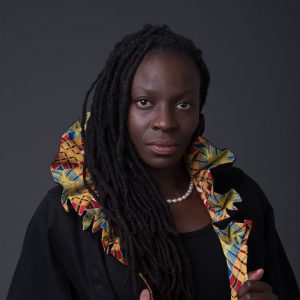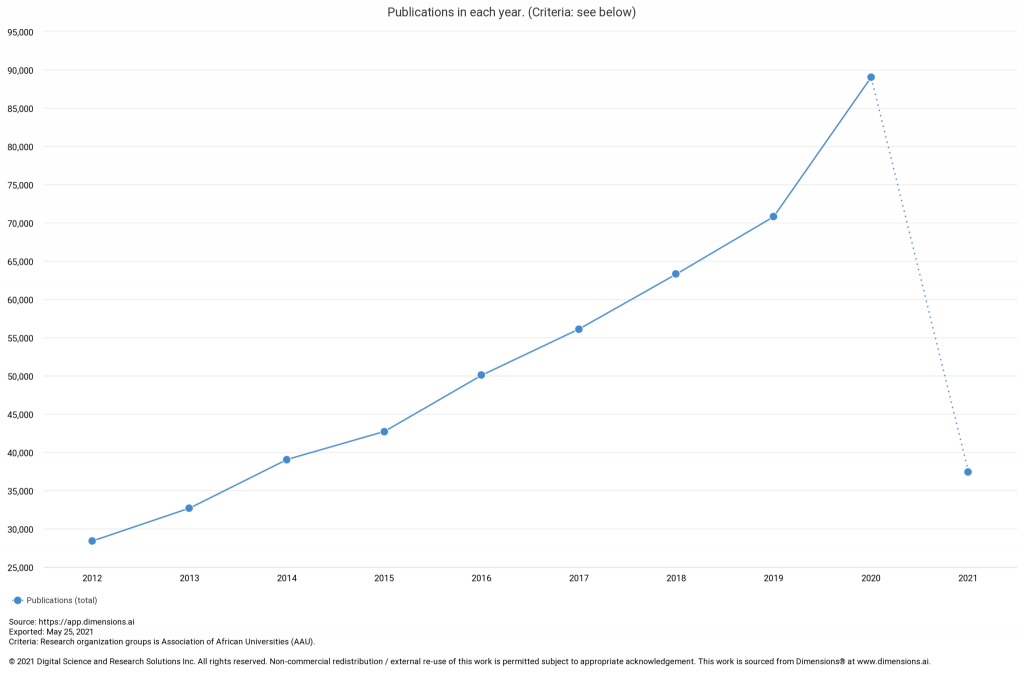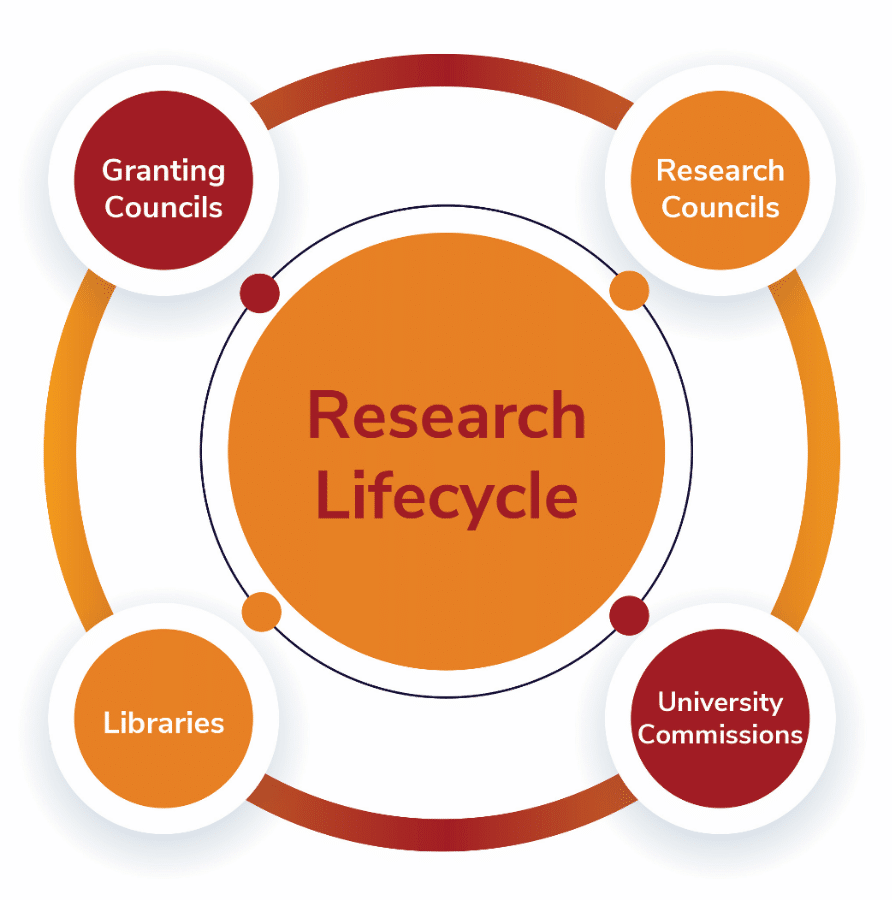Subscribe to our newsletter
Supporting Accessibility and Visibility of African Research Through Open Access
 Last year we released our report, Contextualizing Sustainable Development Research, which highlights the growth in research around the UN’s Sustainable Development Goals (SDGs). We are continuing our blog series on SDG-related research with a post by Joy Owango about SDG 17, Partnership for the Goals.
Last year we released our report, Contextualizing Sustainable Development Research, which highlights the growth in research around the UN’s Sustainable Development Goals (SDGs). We are continuing our blog series on SDG-related research with a post by Joy Owango about SDG 17, Partnership for the Goals.
Joy is an experienced award-winning Founding Director, skilled in team building, management, data analysis, and business strategy. She has experience in Research Capacity, Higher Education, Research Analytics, and Donor and Government Relations. She is the Executive Director of the Training Centre in Communication, based in the University of Nairobi, Kenya. The centre provides capacity support in improving researchers output and visibility through training in scholarly and science communication.
If you want to go fast, go alone. If you want to go far, go together.
–
African proverb
This proverb rings true as we celebrate Africa Day and highlight the way that partnerships have been instrumental in supporting the accessibility and visibility of African research through Open Access.
The TCC Africa team were recently invited by Kenya’s grants council, the National Research Fund, to train researchers from 15 universities from this region on open science and how it helps in improving research output and increasing visibility. Going by road made so much sense as I needed time and inspiration to write this blog, and what better inspiration is there than the beautiful Kenyan countryside. As we drove down the Great Rift Valley, we passed lush green hills, the air fresh from last night’s rain. It is a long 400 km drive from Nairobi, Kenya’s capital city, to Kisumu, another city located by Lake Victoria, the world’s ninth-largest continental lake.
One of the Goals and Priority Areas of Agenda 2063, is “A Prosperous Africa, based on Inclusive Growth and Sustainable Development” and is a principle of UN Sustainable Development Goal (SDG) 17, which focuses on partnerships for the goals. Since 2018 and the launch of Plan S, the increased use of Open Access has been evident, with the need for effective access and usage of various Open Access research solutions. At the heart of this process is a paradigm shift with the rise of Open Access research discovery citation databases, which have taken over similar traditionally paywalled options.
The result of these developments has led to a demand for access and effective usage of Open Access citation databases in the Global South, and the best way to effectively action this is through collaboration.
African researchers have taken advantage of open science and Open Access, as evidenced by the increase of Open Access publications. Open science publishing infrastructures like the Africa Academy of Sciences Open Research Platform and African community led preprint repository AfricArxiv has led to innovative Open Access publishing offering rapid publication and open review whilst supporting data deposition, with the former supporting African Academy of Sciences fellows, and the latter supporting research done by Africans or non-Africans conducting research on and about Africa.

Since 2018, African researchers have produced over 400 thousand publications, with 50% of these being Open Access. It is also clear that year on year African research output has been steadily increasing. In Africa, TCC Africa’s approach to effectively working with Digital Science in providing support in accessibility of the Open Access research discovery solution Dimensions is multifold. Dimensions has partnered with Research4Life, a charity research organization providing Open Access research solutions to researchers in the Global South, to allow its community to discover research information and enable its users to gain actionable insights into research trends using the Dimensions platform. What we did as a centre was go a step further and work with the higher education stakeholders in Sub-Saharan countries to make sure users in African countries were comfortable in accessing and using Dimensions.

The reason we did this is that, for the longest time, higher education stakeholders worked in silos. Each higher education institute (HEI) has an expectation of researchers to produce good quality outputs and increase their visibility. By bringing them together they can seamlessly provide uniform access to Dimensions in their respective countries. We brought together research councils, granting councils, university commissions and library consortia and trained them in using Dimensions to support their academic and research communities using open science.
How does this work? As gatekeepers, library consortia are responsible for the negotiation and access to literary resources used in their institutes, while research councils regulate and monitor output done by research institutes, and granting councils fund research and the university commissions are responsible for regulating and monitoring universities performance. All these HEIs and other higher education stakeholders agree on the importance of open science, its philosophy, and how Open Access can support increasing research output and visibility coming out of their countries.

In order to make a change to the whole research lifecycle, these different stakeholders understood that they had to work together and be of one voice when it came to open science and seamlessly implementing an Open Access citation database such as Dimensions across each of their respective countries.
Though you may expect such a process to be difficult, it has been received positively, predominantly based on the underlying premise about how open science can support the academic and research ecosystem in each of these countries.
In Kenya, the National Research Fund grants council and the Kenya Libraries and Information Services Consortium have joined forces to support the Kenyan academic community in seamless access to Dimensions, with the former providing research capacity support on training researchers on how to use the database and the latter providing easier access within their institutes and also training their respective institutes. The National Council for Science and Technology, Malawi’s research council, works closely with the Malawi Library Consortium in supporting their academic community in accessing and using Dimensions for research discovery.
The Zambia Library Information Consortium and the research and granting council National Science and Technology Council have agreed to work together to support their academic community in providing seamless access and effective use of Dimensions. This began with a national webinar explaining the process in March 2021.
In Botswana the Department of Research, Science and Technology (DRST) through the Ministry of Tertiary Education, Research, Science and Technology and the Botswana Library Consortium have agreed to work together in supporting their academic community in providing access to Dimensions, complete with capacity building resource. Similar discussions are ongoing with more HEIs in the continent, as they are keen to look at ways in which they can support their academic communities.
The global COVID-19 pandemic has taught us the importance of collaboration and of Open Access, and demonstrated how both are beneficial to scientific advancement, and necessary to move science forward to combat current and future challenges. Last year’s Digital Science report, How COVID-19 is Changing Research Culture, showed how many more preprints have been published since the start of the pandemic compared to before, and the impact that this has had on the speed of medical innovation, and the potential lasting impact this will have on how research is carried out in the future. By forging partnerships across African HEIs to foster open science and collaboration, we can help researchers make the greatest possible impact through their work.
This 54 country continent is a geographical jigsaw, with a land area of 30.4 million sq km (11.7 million sq mi) – enough to accommodate the U.S., China, India, Japan, Mexico, and many European nations, combined. The African continent is mired with a varied political economy, and is united under the African Union’s edict on partnerships. Working towards SDG 17 has been essential in conducting research building global relationships and nationally breaking down HEI silos in a bid to provide seamless access and use of Open Access solutions. By working together in such partnerships, African research will make an even greater impact on the global research landscape.
